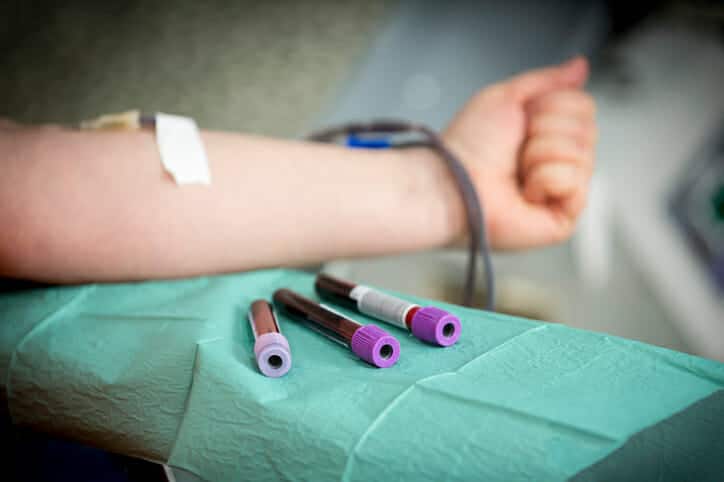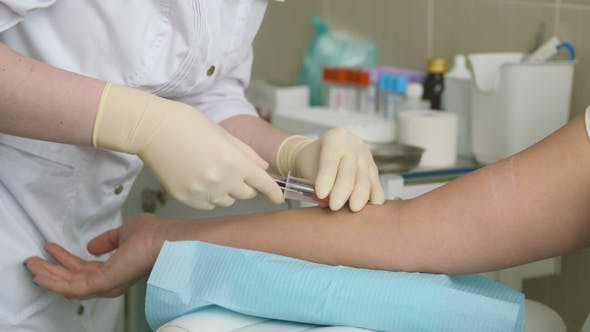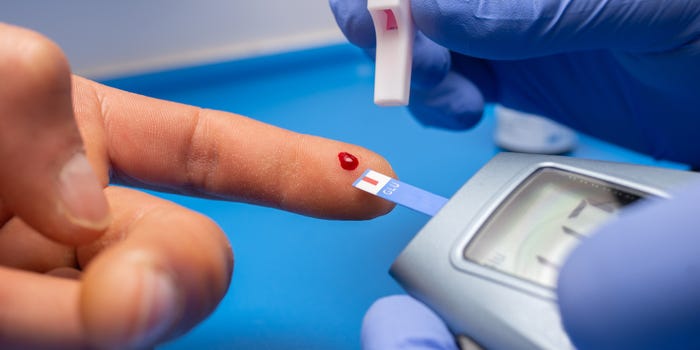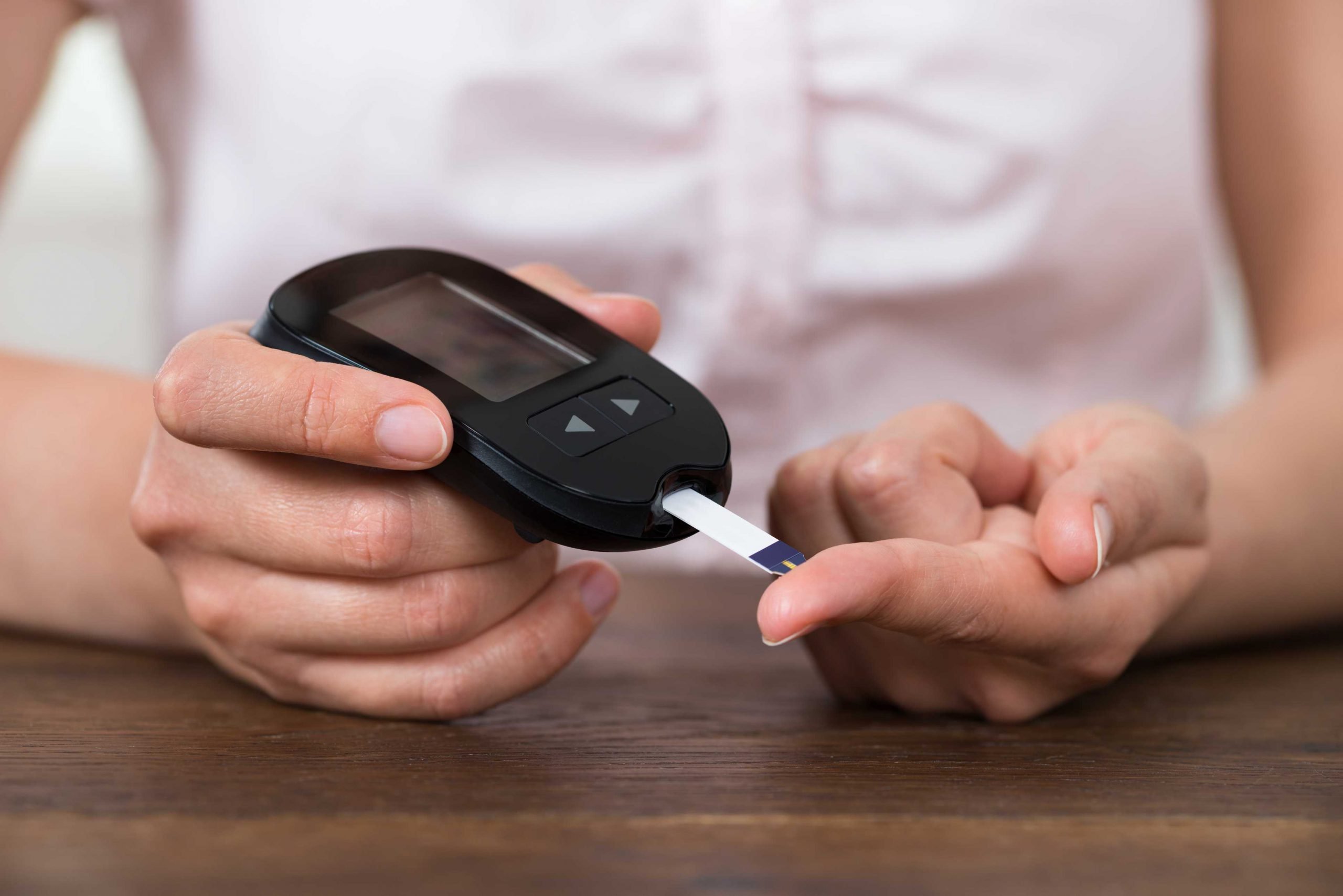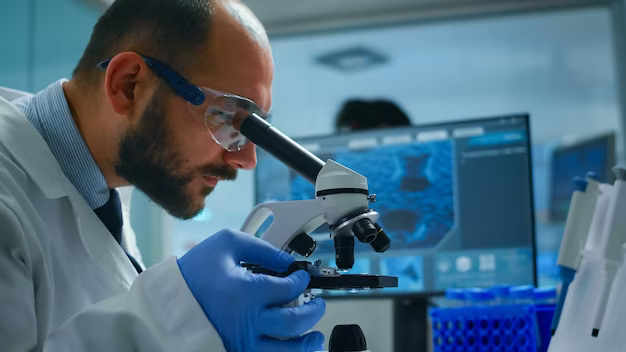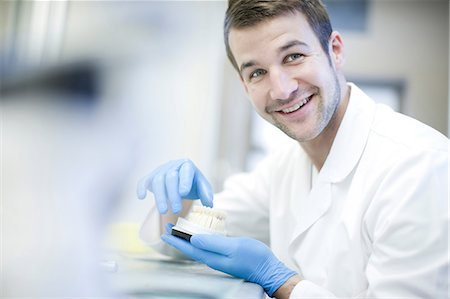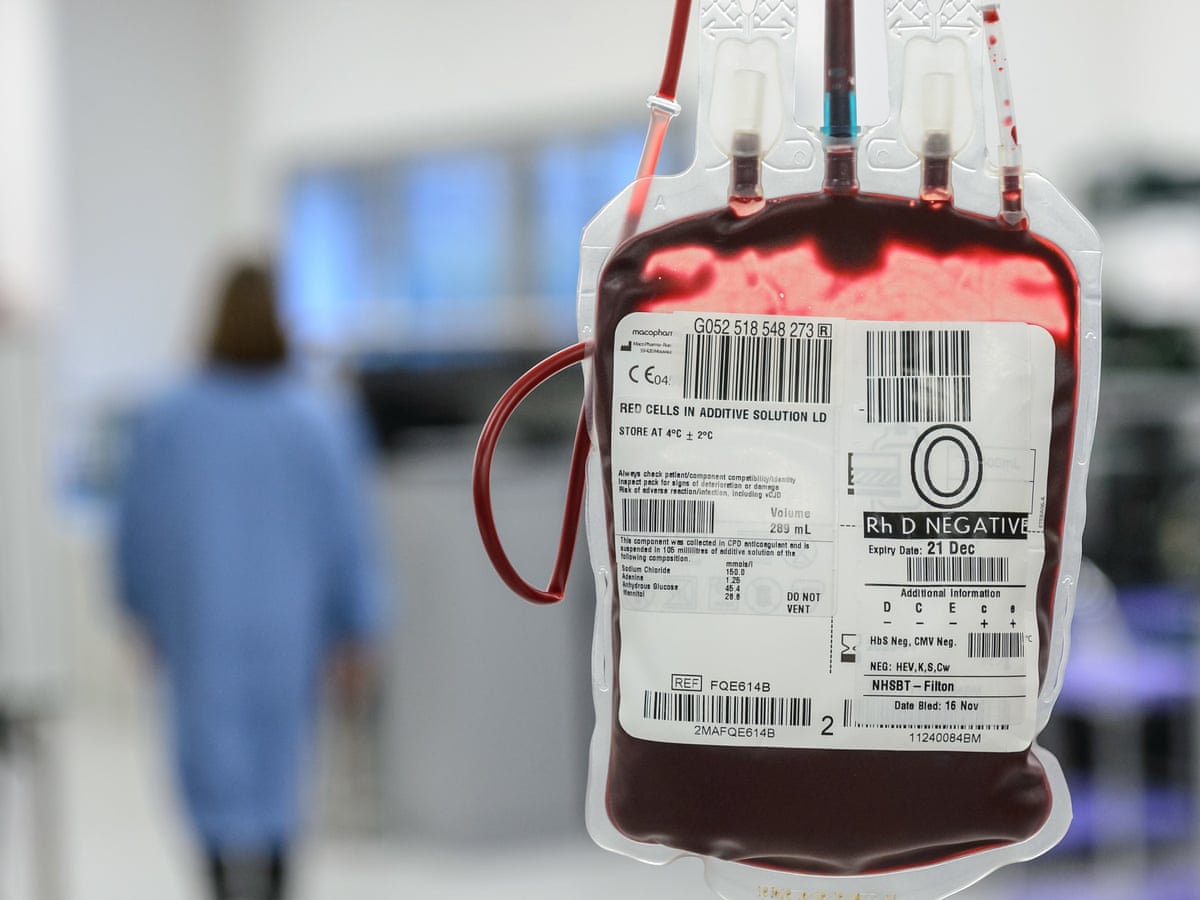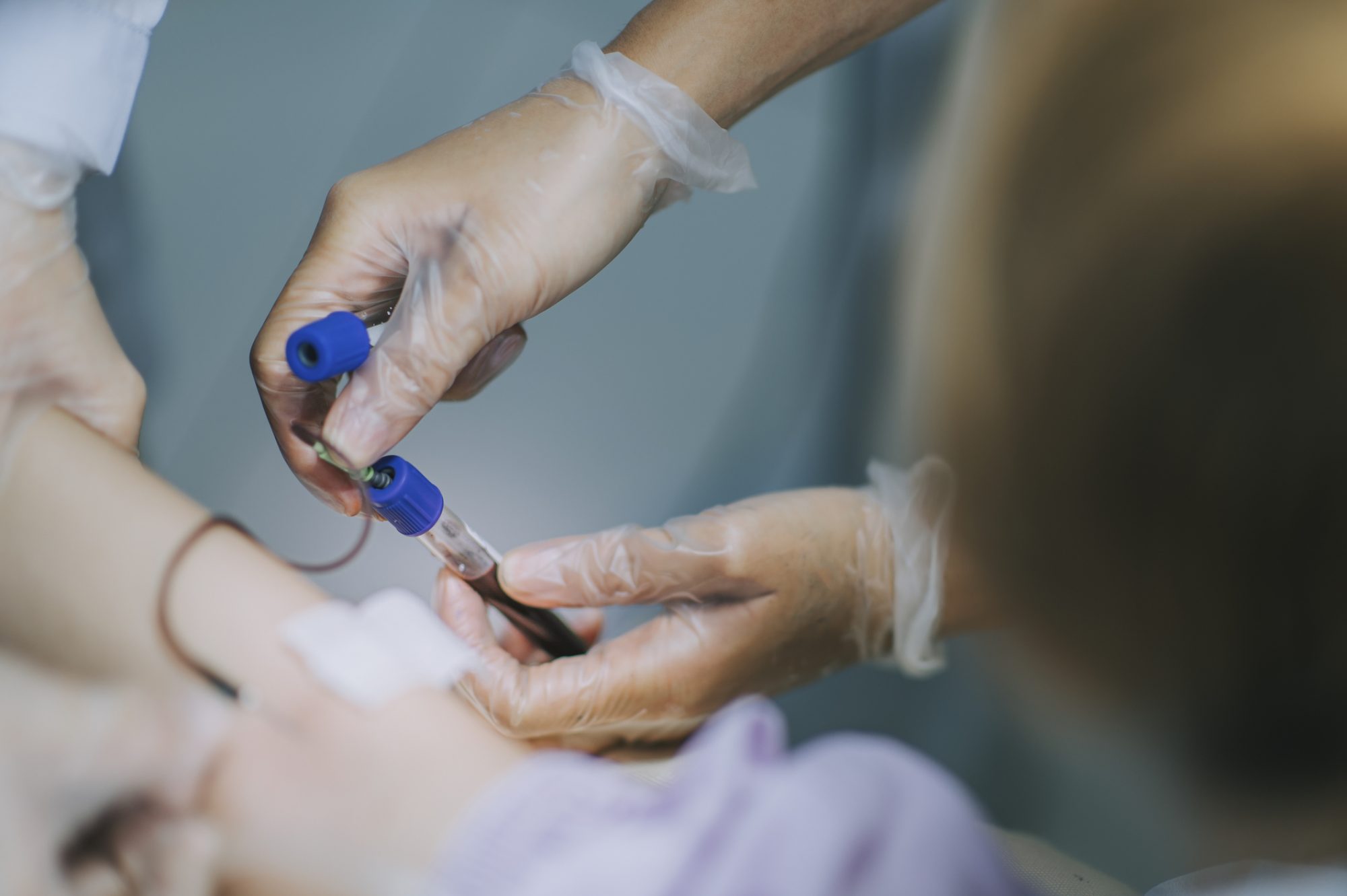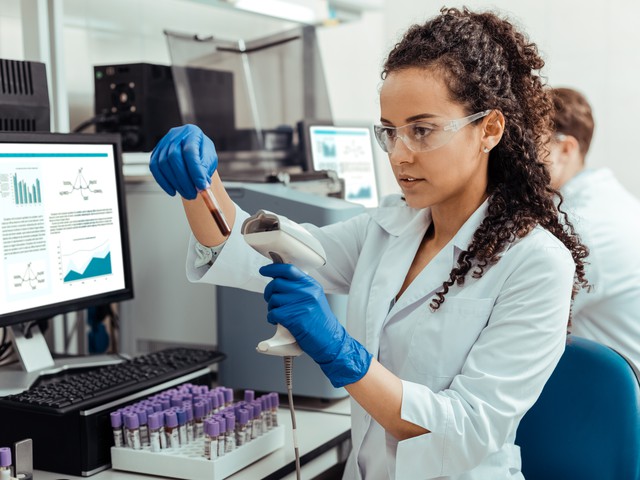Category: Medical Lab Technician Assistant
Qualities of Top Professionals with Personal Support Worker Training
November 16, 2018Personal Support Workers (PSWs) are caregivers who assist clients through the varied activities of their day-to-day lives. These clients, often seniors, usually need help because of old age, illness, or injury, and over the course of an average day, a PSW might support them in a number of ways, from laundering their clothes, to performing housekeeping and personal care, to aiding them with their personal hygiene or mobility. While they often work in clients’ homes, they can also find jobs in long-term care facilities, group homes, or private care facilities.
It can be an enormously rewarding job for those who take pride in helping others. PSWs go to work every day to improve their clients’ standard of living, and those who succeed in the field draw on a range of soft skills and personal qualities to do so.
If you’ve ever considered a new career as a PSW, here are the qualities of top professionals with personal support worker training.
Flexibility and Adaptability Are Important Qualities for PSWs
PSWs don’t perform the same tasks every day, or even necessarily work in the same location. They need to be prepared to work with clients in a variety of situations, each of whom have their own unique set of needs. One client might require light housework and help getting around the house, while the next might need assistance with their medications, their laundry, and their hygiene. One client might suffer from dementia and become easily lost or confused, while another might be a senior with a sharp mind but significant mobility issues. Top professionals with personal support worker training know how to adapt to any new client or situation they’re given.
Being a PSW is not generally a Monday to Friday job, either, and the hours might vary significantly from week to week, so personal support workers need to flexible with regards to their schedule.
PSWs help clients with a variety of tasks, including meal preparation
Professionals with Personal Support Worker Training Communicate Well
Personal Support Workers need to be able to communicate effectively. Whether you’re talking to clients, family members, supervisors, social workers, or other support staff, it’s essential that you can relay information clearly. PSWs are also regularly expected to log information in books and charts, and might sometimes need to write out instructions for other members of staff when switching over shifts, so written communication skills are also important.
PSWs Are Compassionate and Empathetic
Top professionals who have trained at a personal support worker school know the importance of compassion and empathy in their work. Their job often involves helping clients with serious illnesses and injuries, sometimes in vulnerable or sensitive situations, so it’s important that they handle the job with tact, tenderness, and warmth. It can sometimes be a demanding position, so the best PSWs are often those who are most motivated by the desire to care for and help others.
Personal Support Workers Need Patience and a Positive Attitude
Because it can be a demanding position, successful personal support workers also know the importance of patience and a positive attitude. Helping clients can sometimes be challenging, and they may not always be in a good mood themselves, so it’s essential that PSWs can remain calm and not get frustrated. Maintaining a positive attitude is not only important for PSWs to keep their own motivation strong, but also to help motivate their clients and keep them in good spirits.
PSWs can help their clients maintain a positive attitude
Are you ready for a rewarding new career as a personal support worker?
Contact Medix College for more information about our PSW course.
5 Causes of Difficult Blood Draws: An Intro for Students in Medical Lab Tech Courses
October 19, 2018Medical lab technicians have many important responsibilities, from performing electrocardiograms (ECGs) to receiving and maintaining documentation for patients. One of the most common tasks of a medical lab technician is handling patient samples, which can include drawing blood for tests and analysis.
Drawing blood is most often a straightforward and relatively painless process, but as with any medical procedure, there can sometimes be complications and challenges. Students learning how to become medical lab technicians should be aware of the possible causes of these difficulties, which can range from small or fragile veins to needle-averse patients.
Read on to find out five causes of difficult blood draws.
1. Small or Hard-to-Find Veins
This is one of the most common causes of a difficult blood draw. As a result of normal physiological variation, some individuals may have small, thin, or hard-to-find veins, making it a challenge for even an experienced medical lab technician to draw blood. This can sometimes be a result of dehydration, which causes the body to constrict its blood vessels. To rule this out, lab technicians may give the patient a glass of water and try again after a suitable wait. Otherwise, pre-warming the area or asking the patient to rotate their wrist to distend the vein may make it more visible and easier to draw from.
2. Inelastic Veins
One of the many effects aging has on the human body is to make the skin thinner and the veins weaker, as they both lose their elasticity. In younger patients with healthy veins, a punctured vein wall will “hug” the needle, causing a tight seal. With senior patients with inelastic veins, that seal may not be as tight, resulting in hematomas or collapsed veins. Students in medical lab tech courses should be aware of these possible issues when helping senior patients.
Senior patients may have more fragile, inelastic veins
3. Scars from Intravenous Drug Use
When an area is repeatedly punctured over time, scar tissue is likely to develop. This is often the case with current or past intravenous drug users, who may repeatedly puncture an area used for drawing blood over a period of months or years. This scarified tissue overlaying the veins may present a challenge to professionals with career training in healthcare who are trying to draw blood, as there will be increased resistance when trying to insert the needle and the vein could roll away.
4. Chemotherapy
Chemotherapy is often a necessary and life-saving treatment for oncology patients, but it can also have a variety of adverse effects on the body. Among these are its possible effects on the veins. Patients undergoing chemotherapy may have difficult-to-find veins which have decreased in size and elasticity, or even sclerosed.
5. Students in Medical Lab Tech Courses Should Be Mindful of Trypanophobic Patients
Graduates of a medical laboratory technician program may encounter issues even in patients with healthy and easy-to-find veins. Some may have mobility issues, or difficulties communicating. Others may have trypanophobia—a fear of needles. These individuals may feel anxious, have panic attacks, or even faint when confronted with a needle. In cases like this, it’s important for the medical lab technician to work with the patient and put them at ease in order to acquire the sample they need.
Even in a patient with healthy, easy to find veins, a fear of needles will present a challenge
Are you interested in a career as a medical lab technician?
Take a look at Medix College’s medical lab tech courses.
How Medical Lab Tech Training Prepares You to Collect Blood Samples Safely
July 27, 2018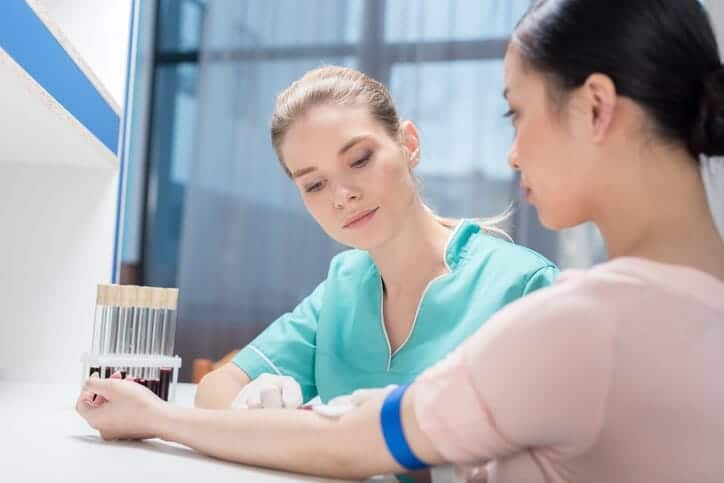 Blood tests provide essential information to healthcare professionals. They can help determine whether a patient has cancer, is pregnant, has a serious illness, and much more besides. As such, the collection and testing of blood samples is an essential part of our healthcare system.
Blood tests provide essential information to healthcare professionals. They can help determine whether a patient has cancer, is pregnant, has a serious illness, and much more besides. As such, the collection and testing of blood samples is an essential part of our healthcare system.
Medical lab technicians are the dedicated professionals who perform this task, among several other duties. There are many essential considerations that must be observed when collecting blood samples, which makes in-depth and hands-on training especially important. Here is a closer look at how top training programs prepare students for this responsibility.
Medical Lab Technician Training Emphasizes the Importance of Proper Sanitation
Classroom theory helps to establish the importance of essential steps taken during blood sample collection. While studying in medical lab tech courses, for example, students learn a wide range of sanitation procedures for before and after the blood specimen has been collected. These procedures are essential, and a vital part of any career as a medical lab technician.
Graduates know to always practice proper hand-hygiene, and wear gloves to prevent contact with a patient’s blood. Students are also aware that they must use needles and syringes of only the disposable type so that a client’s health is never compromised. Students in medical lab tech courses also learn how to properly disinfect the puncture site, usually applying an alcohol swab of at least 70 per cent to prevent infections. Once the blood specimen has been taken medical lab technicians are trained to observe proper waste management procedures, disposing of disposable needles and syringes in their proper bins before washing their hands. Hands-on Experience Helps Students Develop Essential Skills, Such as Positive Patient Identification
While theory is an important part of medical lab tech training, hands-on practice helps to solidify essential concepts and turn them into routine. It’s for this reason that an off-campus externship component is included in a Medix College education. In fact, it’s a requirement.
Essential steps, such as positive patient identification, can be practiced in a real work setting. As a result, students remember to always identify patients using two pieces of information. Medical lab technicians also know to ask open ended questions such as “What is your date of birth?” rather than simply ask patients to confirm information using yes or no answers. This helps to ensure that no specimens get labelled incorrectly throughout training and after graduation.
Medical Lab Technician Programs Stress Proper Patient Care When Collecting Samples
Classroom theory and hands-on practice also help students develop essential soft skills such as patient communication. During the blood specimen collection process, it is important to make sure that patients receive high quality care. There are many patients who, regardless of age, maintain a fear of needles for a number of reasons, which can make drawing blood samples from them challenging. An effective way of staving off that fear is communication, an essential skill that top programs foster in their students.
Medical lab tech training helps students develop the qualities and skills needed to put patients at ease. For more distressed patients, particularly young children, it is important that graduates be both empathetic and understanding. Medical lab technicians can be friendly, make use of positive distractions, and reassure patients that they are in safe hands. These approaches can help soothe patients, and make the process of blood collection a less stressful experience.
A great healthcare college in Ontario can help you start your career!
Contact Medix College for more details.
4 Facts About Blood Chemistry Tests for Students in Medical Lab Tech Courses
May 25, 2018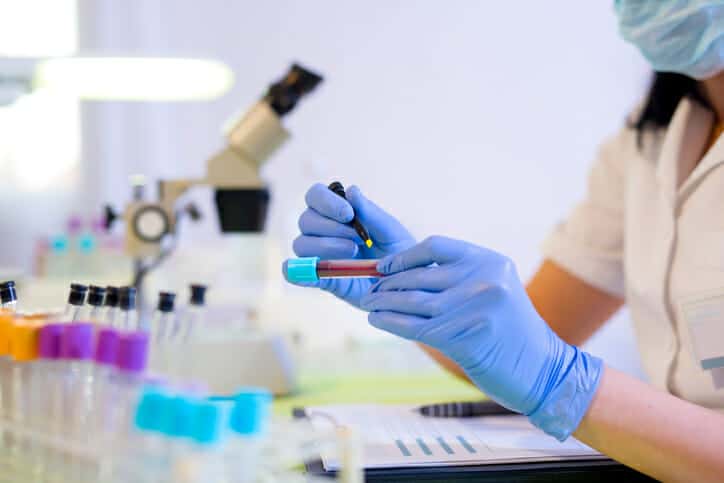
1. It Helps Doctors Diagnose Diabetes by Determining Glucose Levels
Glucose is one of the most important parts of the BMP. It’s a sugar which provides the body with most of its energy, making it a vital aspect of health. Fasting is often required before these sugar level tests take place, in order to provide more accurate results. Medical lab tech training teaches students to analyze plasma glucose in milligrams per deciliter (mg/dL), and these results are crucial in determining important information, such as whether the patient has diabetes.
Blood testing is a the common means of diagnosing diabetes
70-99 mg/dL is a normal result; 100-125 mg/dL is seen as a prediabetic stage while even higher results help doctors diagnose diabetes. This condition can have a significant impact on a patient’s life and health, so early diagnosis with the help of blood chemistry testing is important.
2. Blood Chemistry Testing Helps to Discover Many More Medical Conditions
Calcium is also analyzed during blood chemistry tests. Unusual levels of this mineral can lead to bone disease, kidney disease, and many other illnesses. Sodium levels are measured to avoid heart or kidney trouble, while abnormal carbon dioxide levels may appear after respiratory disease, diarrhea, and much more.
Some minerals and chemicals are particularly important while checking kidney health. Blood chemistry tests measure blood urea nitrogen (BUA) and creatinine, which healthy kidneys are able to filter out of the body. Unusual levels of these components can represent kidney disease/disorder.
3. Professionals With Medical Lab Tech Training Make Blood Testing Procedures Quick
Blood tests only take a couple of minutes to complete, which reduces the stress experienced by the patient. Blood is either taken from a vein in the arm or drawn from a finger prick. Finding a vein can sometimes be tricky, but medical professionals are able to locate one by slightly restricting blood flow around the upper part of the arm.
Once the needle is inserted, the blood is collected into a test tube. The contents of this test tube are then analyzed by grads of medical lab tech courses, who check the quality of the blood sample.
4. Medical Lab Technicians may Have to Carry out Follow up Blood Tests
Team structures encourage lab technicians to improve their work
After the sample has been analyzed in a lab, the results are sent to a doctor who checks whether they reflect a bigger medical problem. The first test is usually not enough to provide a clear diagnosis, however. Abnormal results often require a second test, in order to make sure that the correct treatment is selected for the patient. Blood tests can detect and stop the development of dangerous medical issues at an early stage, which is part of what makes a medical lab technician career so rewarding.
Help to improve the wellbeing of the general public after healthcare training.
Find out more about the top-class programs at Medix College.
Why Medical Lab Tech Courses Make Sure Their Students Develop Strong Teamwork Skills
April 13, 2018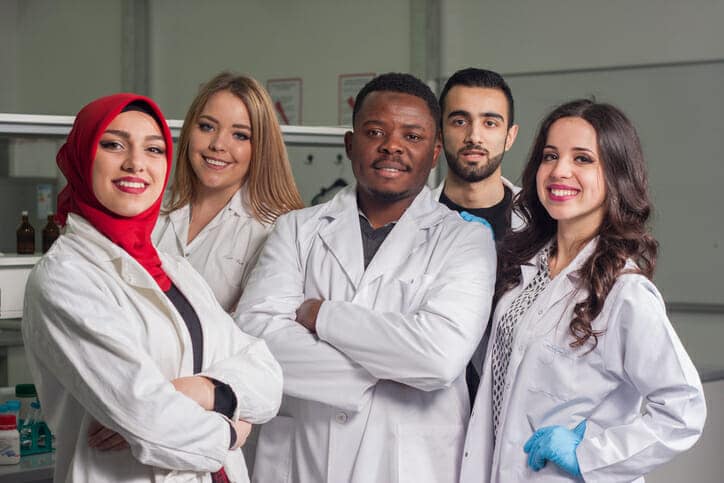
The rapid growth of healthcare industries has put increasing pressure on the daily operations of medical laboratories, the epicenter for most medical decisions. With these changes, the need for efficient and thorough lab work has never been greater.
Amid the integration of new medical technologies and specializations, medical lab technicians are taking on new duties, from laboratory preparation to patient processing. Medical lab tech courses are also ensuring their students enter the field with strong teamwork skills, now a must for medical professionals. Are you curious to know why teamwork is so important for modern labs? Keep reading to find out.
Teamwork Helps Reduce Errors and Ensure Patient Safety
Teamwork skills for lab professionals are hailed as a potential solution to diagnostic error. These errors have a variety of causes in laboratory work culture, including poor communication, limited feedback for lab work, and a tendency to not report errors. For many, strong teamwork skills are the answer, with an emphasis on communication and transparency.
According to the Canadian Health Services Research Foundation, performance in medical labs is vastly improved by team dynamics and an emphasis on a shared purpose. Team structures encourage knowledge-sharing, allowing for performance feedback and a willingness to disclose mistakes. Since fostering this work culture is essential, medical lab tech courses teach students strong teamwork skills.
Team structures encourage lab technicians to improve their work
Medical Lab Tech Courses Emphasize Teamwork to Keep Operations Running Smoothly
Teamwork is also a matter of industry growth and specialization. A laboratory technician program will equip students with the many technical skills required to operate the newest medical technologies. Once students graduate, some may work for a big lab with several different departments. These departments may have different tasks or responsibilities, and many colleagues may have specialized skills. In these instances, teamwork can help promote understanding between co-workers and departments, ensuring that operations run smoothly and that everyone is on the same page. Some laboratories may even encourage cross training and collaboration, so that if one employee or department feels overwhelmed, others can step in to help.
Teamwork Helps Medical Lab Technicians Thrive
According to the World Health Organization, team dynamics should be instilled at all levels of medical education. For students studying toward a Medical Laboratory Technician / Assistant diploma, this emphasis helps them prepare for careers that feel truly rewarding. Medical professionals repeatedly describe greater career satisfaction when working within a well-defined team, citing the merits of good leadership, trust, and constant communication.
A strong laboratory culture helps technicians invest themselves fully in their work, recognizing their successes and receiving constructive feedback on mistakes. Since medical lab technicians are required to make an immediate impact in a fast-paced field, the merits of teamwork are best imparted while they are still students. It is for this reason that top diploma programs emphasize teamwork, and even allow students to practice their skills through practicum placements in real work environments.
In medical laboratories, teamwork is a crucial component of a healthy work culture
Are you looking to join a medical team as a lab technician?
Contact Medix College to know more about our medical laboratory technician school.
Interested in Medical Lab Tech Training? 4 Facts About the Important History of Blood Banks
March 09, 2018
Today, the process of donating blood and receiving transfusions is routine. In fact, roughly half of all Canadians will require a blood transfusion at some point in their lives. The service that facilitates this was built up slowly over the 20th century, growing from early techniques and exploratory research to a trusted and vital part of the healthcare system. Here are four facts about the development of blood banks for medical professionals in training.
The First World War Encouraged Visionaries to Push for Progress
The 19th century saw some important early steps in blood transfusion, with the performance of the first human to human blood transfusion and the discovery of different blood types. However, it was the medical needs of World War 1 that encouraged a real leap forward, with a Canadian surgeon, Lawrence Bruce Robertson, pioneering the successful use of syringe transfusions.
This war saw the establishment of the first blood banks, with extracted blood being stockpiled for the first time at Allied casualty clearing stations ahead of the Battle of Passchendaele in 1917. The benefits of blood transfusions recorded during that conflict, and the effectiveness of having sufficient supplies on hand, helped convince medical authorities that the stockpiling of blood had considerable benefits.
Establishing Early Public Donor Networks Was Instrumental in Creating Blood Banks
While the acute needs of militaries drove the development of the first blood banks, opening up the benefits of blood transfusion to the civilian public would require an organized, steady supply of donations. One of the first services set up to deliver this was the London Blood Transfusion Service in 1921. This was one of the first donor networks, and consisted of approximately 500 donors. Administered by the British Red Cross, the idea caught on and similar networks began to spring up around Europe.
Just prior to the outbreak of World War 2, Hungarian physician Bernard Fantus established the first hospital blood bank in the US at Cook Country Hospital in Chicago. The wartime push for donors would soon help to build networks around the US and Canada that many professionals with healthcare training still see today.
The Arrival of Plastic Helped to Revolutionize and Simplify Blood Storage
One of the first widespread uses of plastics in the post-World War 2 era was by medical organizations looking for a better way to store, transport, and provide blood for transfusions. The drawbacks of using glass containers were clear, with the rigors of military or emergency scenarios often resulting in smashed bottles.
The storage of blood and plasma was hugely simplified by plastic
By changing to cheaper, disposable plastic bags, professionals working with blood could eliminate the rigorous decontamination process glass bottles required before re-use, while also reducing weight and bulk. Workers with medical lab tech training will also know that blood, and its constituent components like plasma, can also be easily refrigerated when stored in well-designed plastic bags. As more products used plastic elements over the 1960s and 1970s, the benefits of a plastic changeover were already being seen in blood banks.
Pros With Medical Lab Tech Training Now Help Provide Blood for 4.5 Million Patients Annually
Today, the hugely expanded role that blood banks play in Canadian public health is evident. Across the US and Canada, over 20,000 litres of donated blood are used on an average day. The storage and supply of blood is now managed by a national authority known as the Canadian Blood Services. Rolling campaigns for donations that authorities like the Canadian Blood Services carry out help to ensure that the considerable supplies needed by Canadian patients stay sufficiently stocked and ready to help people all over the country.
The scale of the role that blood banks now play in the medical system is substantial
Do you want to do your part in facilitating better public health?
Contact us at Medix College today to learn how a medical laboratory technician program could be perfect for you.
A Look at Recent Advances in Phlebotomy for Those Completing Medical Lab Tech Training
February 16, 2018
For most people, the prospect of blood being drawn likely won’t seem stressful. Phlebotomy is a fairly routine process that is both quick and safe. However, some medical conditions make this process more difficult. In addition, for those who have a fear of needles, blood tests or blood donation can be a stressful experience.
Fortunately, recent advances in phlebotomy hold promise, and could be the key to making the process of collecting blood even smoother for those with complicating conditions or a fear of needles. Here’s a look at some of the new technology and developments you might one day see during your career.
New Imaging Tools Could Help Find Suitable Veins
Individuals with a history of intravenous drug use, or even with just naturally small, fragile, or blocked veins, can experience difficulty. It may be hard to draw blood from these patients, or even find a suitable vein in the first place. This could lead to medical professionals inserting needles multiple times in an effort to find a vein, which can cause stress and discomfort for the patient.
New imaging technology could present a viable solution to this problem. For example, the “VeinViewer Vision 2” uses a near-infrared light and a projector to detect the activity of veins in a patient and then project an image of their activity back onto the skin where they are found. The effect is almost like a safer version of an X-ray, allowing medical professionals to see under the skin and find suitable veins for blood work. For those graduates of medical lab tech training who become phlebotomy technicians, this is a tool that has the potential to save a great deal of time, and would likely allow individuals with difficulty giving blood to have a more comfortable experience.
Pros With Medical Lab Tech Training Can Look Forward to a Different Kind of Needle
Part of the problem with standard needles is that some people may have a fear or even phobia of them. What’s more, frightened patients can sometimes have difficulty staying still for the duration of a blood sampling, especially when their fear is extreme.
Approaches that minimize patient fear and anxiety can help make sampling easier
One possible solution is the recently developed VenousPro system, which uses sensor technology to automatically target appropriate veins for drawing blood. In addition, this system goes one step further by employing a design that hides the presence of a needle, and also has a clamping mechanism to hold arms in place. This combination allows for a blood drawing process that is less distressing to patients, and which makes it easier to draw blood even when they’re afraid.
For graduates of medical laboratory assistant schools, these new technologies can be exciting developments to look forward to in the coming years. However, these technologies could still be a long way away, and even once they do become widespread, the interpersonal skills students master during their hands-on training will still be essential for soothing stressed patients. Do you want to learn more about modern phlebotomy training?
Contact Medix College to find out about our medical laboratory technician program!
3 Things Students in Medical Lab Tech Courses Need to Know About Holter Monitors
January 12, 2018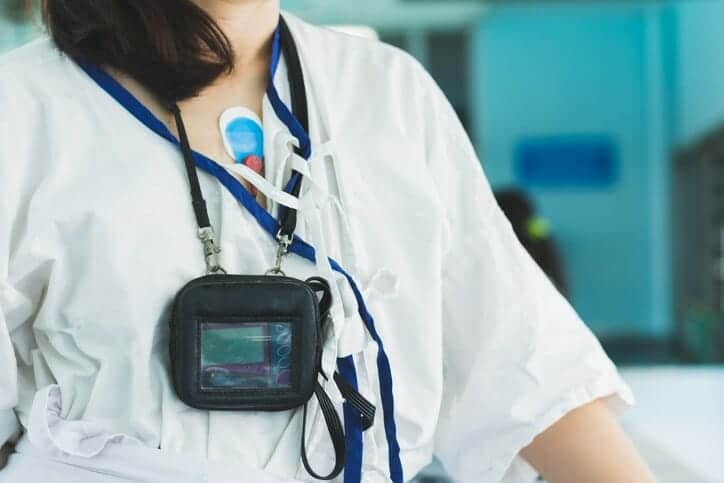
Completing a Medical Lab Assistant / Technician program opens up a world of opportunity. You can work in a variety of different settings, including hospitals, research labs, veterinary laboratories, and doctor’s offices. You’ll also be qualified to take on a number of different roles and perform a number of different duties, from processing specimens to preparing worksheets. In fact, your career might even include working with Holter monitors under the direct supervision of a physician or other healthcare professional.
What does this task entail, and why could it be an important part of your career after graduation? Read on to find out!
Grads of Medical Lab Technician Training Know Holter Monitors Record Heart Rhythm
Part of what makes completing medical lab technician training so rewarding is that it allows you to take on an important role within the healthcare system. As a trained professional, the work that you do can greatly help doctors and other healthcare professionals get the information they need to make an accurate diagnosis, and determine the most appropriate care needed.
This is certainly the case when it comes to Holter monitors. Holter monitors are small portable devices approximately the same size as a deck of cards, which use small electrodes to measure the electrical currents of a client’s heart as they go about during their normal daily activities.
In most cases, a client will wear a Holter monitor for 12 to 48 hours, depending on the nature of the test. During this time, they are encouraged to perform their regular routine as faithfully as possible, recording any symptoms they may experience in a diary so that their doctor can later compare these reports to the information provided by the Holter monitor.
Clients Need to Be Careful When Wearing a Holter Monitor
While clients are encouraged to go about their daily routine as much as possible while wearing a Holter monitor, grads of medical lab tech courses know there are some important exceptions they need to be aware of. Contact with water can damage a Holter monitor and affect results, which is why clients should refrain from showering or swimming while wearing a Holter monitor. In addition, they should stay away from x-rays, metal detectors, and high-voltage areas while wearing a Holter monitor.
Doctors Can Request This Test for a Variety of Reasons
There are a number of different reasons why doctors might want one of their patients to wear a Holter monitor. To begin with, several heart problems might only happen from time to time, and therefore might not show up during a regular ECG test. Given that Holter monitors are portable, and record heart activity for a longer period of time, Holter monitors can be well suited to uncovering issues that occur intermittently.
Through a Holter monitor, doctors can determine if a client has a fast, slow, or irregular heartbeat. In addition, Holter monitors can help doctors determine whether a current medication or treatment is working effectively. Because of the wealth of information a Holter monitor can provide, and because Holter monitors are both portable and non-invasive, they are seen as a valuable tool for obtaining crucial information.
Would you like to learn more about Holter monitors in our medical laboratory technician program?
Contact Medix College to get started!
Signs You’ve Found an Excellent Medical Laboratory Technician School
December 29, 2017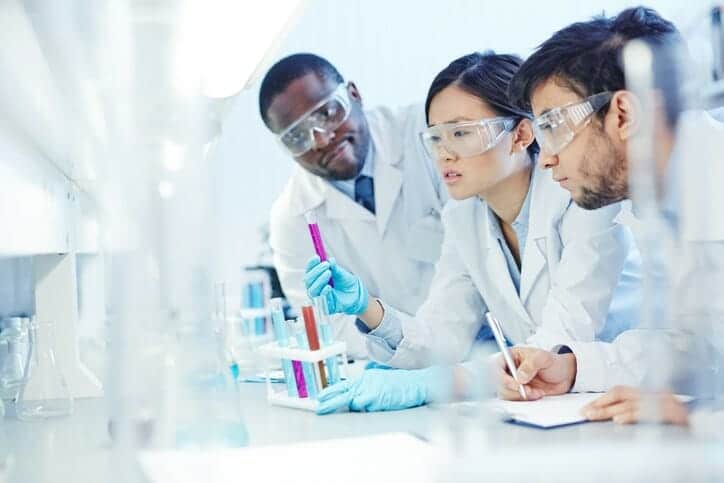
Choosing to pursue training to become a medical lab technician is an important decision to take in your career trajectory. The next one—deciding where to obtain this training—can be a challenging choice as well. The right college can help you in everything from gaining hands-on skills in a practicum placement to help with financing, finding a job after graduation, and more. For this reason, deciding on which college to attend can almost be as important as deciding on which program you would like to study.
Fortunately, there are a few key signs that you can keep in mind when reviewing colleges, which can help you find one that offers an excellent education and career preparation. Keep reading to learn more about these signs!
The Right Medical Laboratory Technician School Will Have Great Facilities
For a hands-on career like that of a medical laboratory technician, training in high-quality facilities is essential to ensure that you will be learning skills in a realistic environment similar to the one you will find on the job.
This kind of training can come with several advantages. For example, purpose-built laboratories and clinics within the college make it possible for students to become acquainted with working in a clinical atmosphere before even starting a work placement, and also allow them to practice in an authentic but low-risk setting as they learn. Finding a medical laboratory technician school with realistic facilities is a great way to ensure high-quality training.
Realistic clinical and lab facilities will help you hone your practical skills
Find a School That Offers Practical Placements in Addition to Medical Lab Tech Courses
A realistic training environment is not the only thing a student needs in order to fully develop their medical lab technician skills and be job-ready upon graduation. A practical work placement is also something to look for in a program, as this will help you bridge the gap between theory and practice. Additionally, it will also allow you to build professional connections and add valuable experience to your resume, both of which can make it easier for you to succeed in the job search after you finish your medical lab tech courses and graduate from college.
Student Testimonials Say a Lot About a Medical Laboratory Technician School
Finally, students are often the best and most honest source of information about a potential college. An easy way to find out what students think of their program is by seeing if the school has testimonials available. Medix College, for instance, has multiple student testimonials. In fact, according to Isabel, a student at Medix College, “[Medix] is a great, supportive atmosphere. When I think of Medix College, I think of success, because I know I’m going to do well, I’m going to graduate, and I’m going to get that perfect job.” By hearing from the students themselves, you can gain insight into what a potential medical laboratory technician school really has in store for you, your education, and your career.
Do you want to know more about finding the perfect medical laboratory technician school?
Contact us at Medix College to learn why our healthcare college in Ontario has one of the best programs available.
Why Hands-On Medical Lab Assistant Technician Courses Offer the Best Career Preparation
November 24, 2017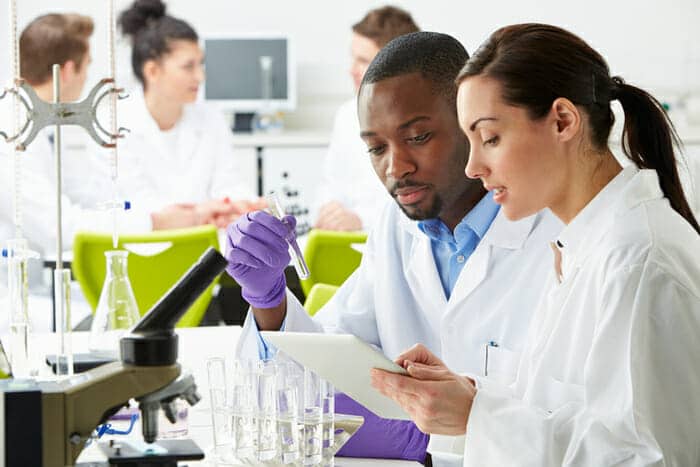
Working in a medical laboratory offers the exciting opportunity to contribute to important work that really helps people. It’s also a career environment that offers particular challenges, such as a need for a high level of accuracy and mastery of very specific kinds of work.
To rise to the occasion, it’s important to complete a program that offers hands-on training of the skills you will be employing every day on the job. This style of learning can help you unlock your potential and make great strides in preparing for your eventual career.
Curious about why hands-on training is so important? Here are some of the main reasons.
Hands-On Medical Lab Assistant Technician Courses Teach Mastery of Processes
Working in a medical laboratory often entails completing procedural work, like preparing solution, processing specimens, and other kinds of important tasks. These are activities which must be completed in particular fashions, with accuracy of execution being essential to ensuring usable results.
For this type of work, there’s no solution quite like learning to complete the task with your own two hands. It ensures that you really know how to identify a good result, and that you understand what a functioning process is supposed to look like on the way to that result. It ensures, in short, that completing these tasks perfectly becomes routine to you. Having this type of familiarity is essential to those looking to embark on a medical laboratory assistant technician career.
Getting Hands-On at Medical Lab Assistant Technician College Teaches You Professional Teamwork Skills
No medical professional works in a void, so understanding how to get along with others and join efforts with them to achieve greater common productivity in the workplace is essential. Few kinds of work invite the opportunity to learn this type of collaborative skill like hands-on training does.
Environment is important for getting the most out of this kind of experience during your studies. Choosing to attend a school like Medix College, which offers small class sizes, industry-grade laboratories, and plenty of personalized attention from instructors, can help you build close, productive relationships similar to what you would expect in a workplace. Enrolling in this type of program can be a great way to gain the professional poise that really makes a person stand out in their career.
Getting Hands-On With an Externship Offers Valuable Pre-Graduation Work Experience
One of the great things about hands-on training is that it doesn’t only have to take place within the four walls of your your medical lab assistant technician college. Rather, many colleges will also have their students take part in externship placements in professional settings out in the community. This provides important exposure to how course concepts are applied out in the real world, and is a great way to help budding professionals make quick strides toward becoming ready for their career.
Unsurprisingly, acquiring this type of experience and adding it to one’s resume is a great way to impress future employers, who love to see candidates who have an understanding of what working in the industry is really like. If you want to be able to hit the ground running—and have an entry on your resume that could help you skate through post-graduation job applications, you’ll want to ensure you get hands-on workplace training as a part of your education.
Are you ready to enroll in medical lab assistant technician courses?
Get hands-on at Medix College!



